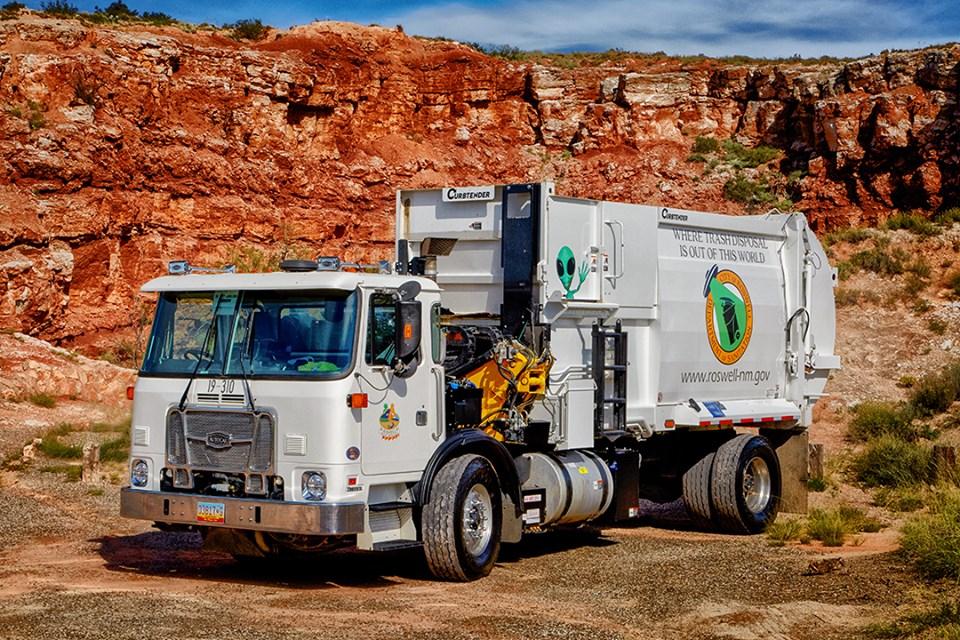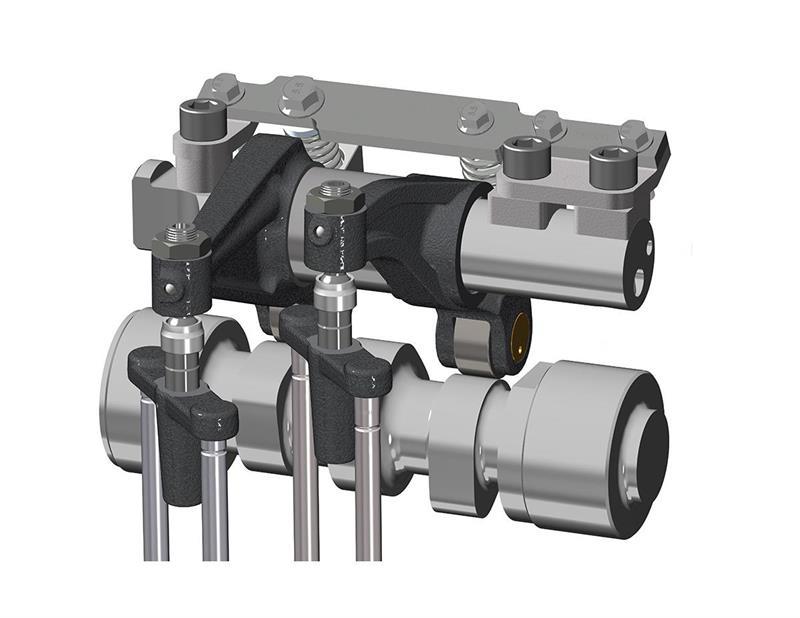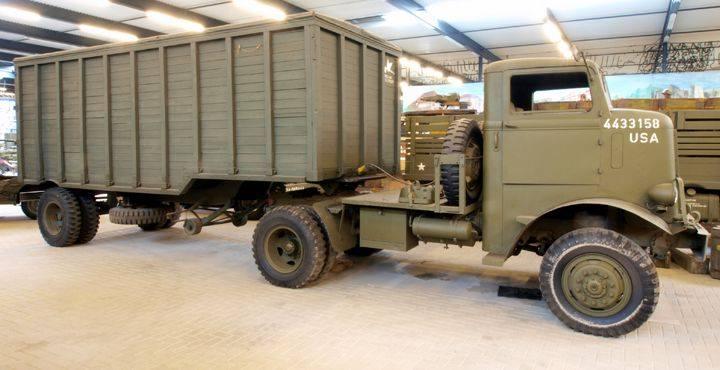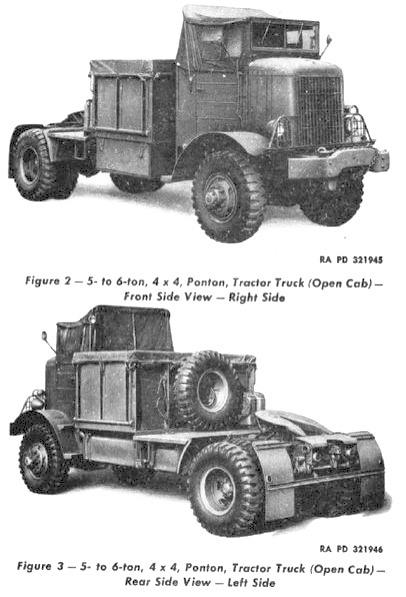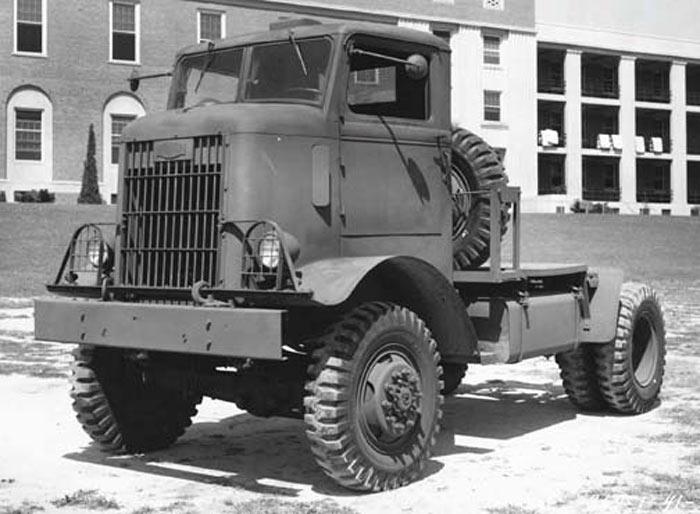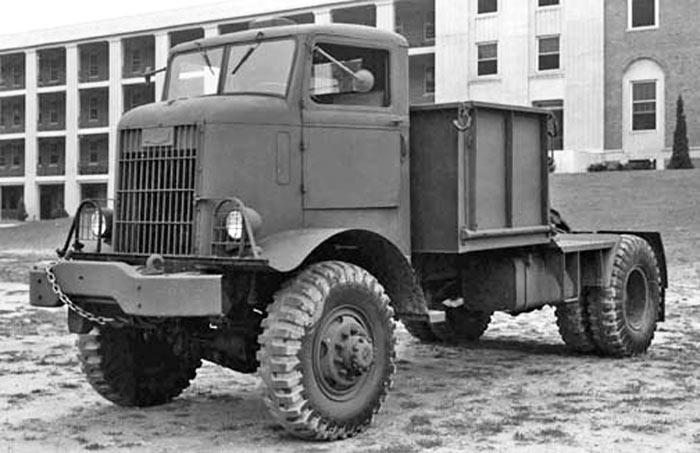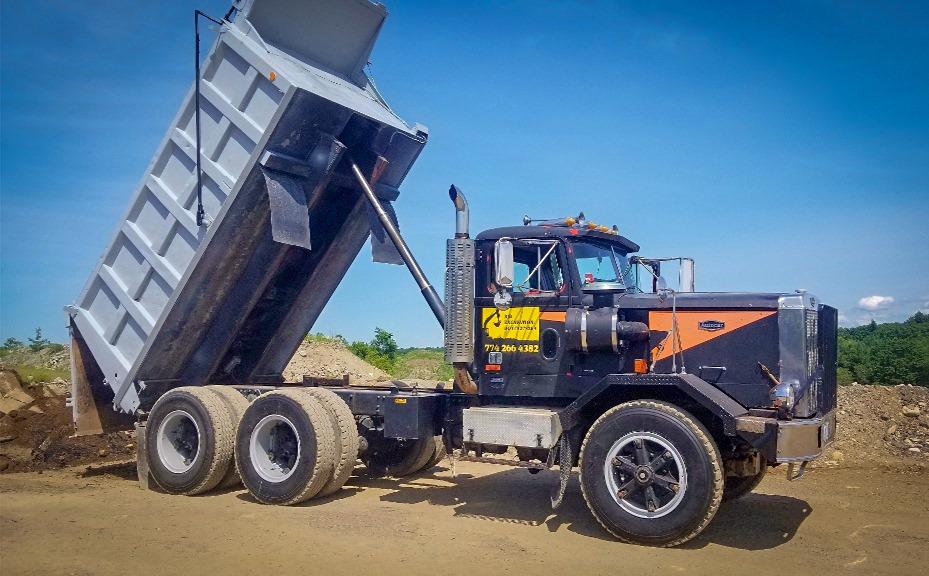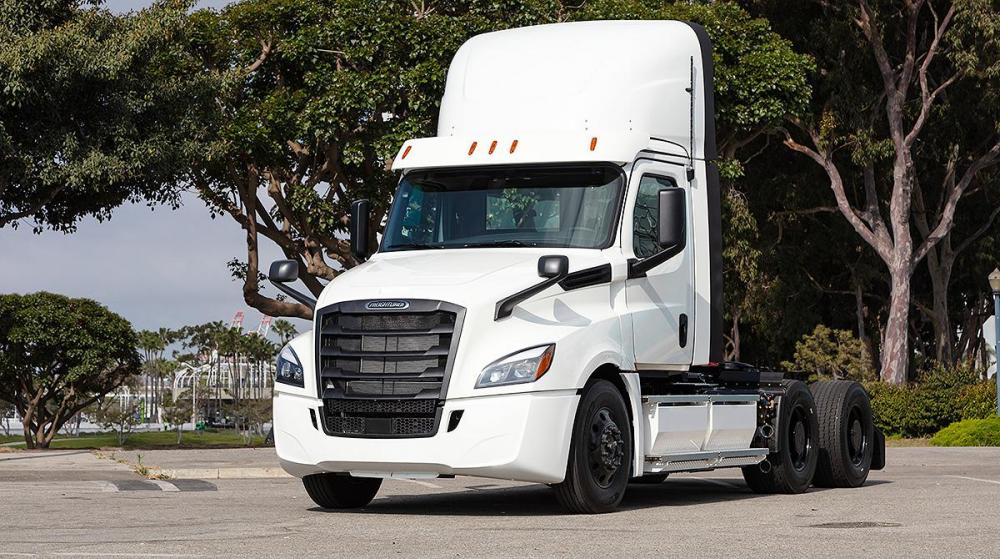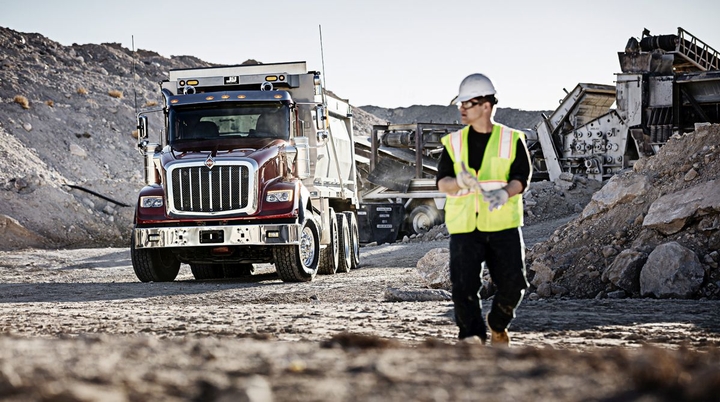
kscarbel2
Moderator-
Posts
18,547 -
Joined
-
Days Won
112
Content Type
Profiles
Forums
Gallery
Events
Blogs
BMT Wiki
Collections
Store
Everything posted by kscarbel2
-
Transport Topics / August 13, 2019 A notable shift in the types of transmissions used in fleets’ Class 8 trucks has occurred over the past five years. Manual transmissions reigned as king among fleets and seasoned truck drivers for decades, but they now represent a minority that is rapidly shrinking. NFI recently converted nearly its entire 2,600-vehicle fleet to automated manual transmissions. “We started the transition at end of 2014, into 2015, and then made it standard in our fleet,” said Bill Bliem, NFI senior vice president of fleet services. “We probably have less than 10 [manuals] now.” Camden, N.J.-based NFI ranks No. 19 on the Transport Topics Top 100 list of the largest for-hire carriers in North America. That’s around the time Ozark Motor Lines expanded its use of AMTs. It put five units into service for testing in December 2013, purchased 10 more in 2014 and started to convert the entire fleet by March 2015. This year, the company will come close to finishing the process. “I wish we had started converting the fleet a little sooner,” said Glen McDonald, director of maintenance at Ozark. “We really like them.” NACFE estimates fleets experience 1-3% fuel economy gains with AMTs compared with manual transmissions. Automated manuals mimic the practices of the best manual drivers, thus evening out performance across a fleet and eliminating less-efficient shifting. AMTs took a while to catch on but now have become the norm because of their advantages in the over-the-road tractor market, Roeth said. Fleets and manufacturers report that AMTs officially have replaced manual as the standard transmission option. “We’re seeing increased fuel economy, lower maintenance costs and happier drivers,” NFI’s Bliem said. Replicating best shifting practices reduces the necessary maintenance due to less stress and wear on the clutch and other shifting components. Fleets also report reduced driveline failures and tire wear. Maintenance costs “absolutely have gone down,” Ozark’s McDonald said. “Before, the driver would push the accelerator and [the transmission] would give them what they asked for. Now when they push it, the engine and the transmission talk and give them what they need.” In addition, across the board, those in the industry cite driver recruiting and retention as a key benefit of converting from manual transmissions to AMTs, an especially important factor amid a driver shortage. Younger drivers, in particular, are drawn to AMTs because they have less experience with manual transmissions when they enter the industry due to the prevalence of automatic transmissions in personal vehicles. Even truck driving schools are embracing the shift. “A lot of the schools are training on automated transmissions instead of manuals now,” said Steve Sichterman, vice president of client services for Conversion Interactive Agency. “They’re hiring drivers that actually have automatic transmission-only endorsements on their CDLs.” Engine and transmission connectivity is “another big deal” that’s driving AMT adoption, said Ashley Murickan, product marketing manager at Volvo. “Many fleets and OEMs are going to complete integrated solutions. Engines and transmissions are usually offered as an integrated solution.” Volvo incorporates its proprietary I-Shift AMT into its vehicles. The company is on its third iteration of the I-Shift. Because the same engineers design Volvo’s engines and transmissions, the two have seamless communication. “This transmission knows the engine-efficiency maps and predicts all the best shift points all the time,” Murickan said. For example, in models with an active driver-assist collision mitigation system, the transmission will downshift by itself when the system detects the potential for a collision. “If you were driving a manual transmission, it might not necessarily be the case that you would downshift because you’re concentrating on braking the vehicle,” Murickan said. Eaton Cummins also integrates predictive features into its transmissions. For example, its predictive cruise control system allows for better shifting decisions when a vehicle climbs a grade. “Essentially, the transmissions are able to see the road ahead and make a decision about what’s coming,” said Charles Ganske, product strategy manager at Eaton Cummins. “You wouldn’t have that in a manual and the driver would have to do that themselves, so it’s definitely an improvement from a drivability standpoint.” Eaton Cummins introduced the Endurant AMT in 2017 and recently expanded some of its features. Endurant is available in Paccar and Navistar vehicles, with plans to expand to additional OEMs. And when it comes to driver recruiting, fleets use AMTs as a selling point because they are easier to use and less strenuous for drivers. The less physical nature of shifting reduces driver fatigue and allows drivers to work later in life. It also opens the profession to people who might possess less strength, such as women or a person suffering from an injury. As is often the case when transitioning from manual transmissions to AMTs, management at NFI and Ozark initially experienced pushback from seasoned drivers who believed manuals are better and safer. But acceptance at both companies happened quickly when drivers tried AMTs. NFI’s Bliem said drivers now like AMTs so much that they don’t want to give one up and resort to a manual if a truck must go out of service for maintenance. Both businesses also found AMTs to be as safe as manuals, even in snowy or icy conditions. Although AMTs have experienced significant growth, torque converter automatics — often referred to as fully automatic transmissions — have made more modest gains. Some in the industry, such as Volvo’s Murickan, suggest the sector has reached a plateau. About 1% of Volvo’s transmissions are automatics. Estimates for torque converter automatic penetration across the trucking industry vary but generally hover around less than 10%. Allison Transmission is the main company offering fully automatic transmissions for OTR trucking in the U.S. It does not offer AMTs or manual options, only torque converter automatics. The company reported a 4% net sales increase in this year’s second quarter compared with the second quarter of 2018. It recently announced the introduction of a medium-duty 9-speed transmission, which builds on the fuel efficiency, performance and durability of the 6-speed model. “We believe very strongly there are benefits to having this power shift capability,” said Richard Price, Allison Transmission’s executive director of Customer Integration and Application Engineering. “The torque converter allows a fluid coupling in the drive line. As such, we’re able to use that fluid coupling for very fine maneuvering at low speeds.” In Class 8 trucks, that means better maneuvering with automatics than with AMTs when backing toward a trailer or loading dock. NFI, for example, initially experienced issues with trailers jumping while backing after switching to AMTs, and drivers had to adjust their operating procedures. Torque converters also take full engine torque to help launch a vehicle, Price said. “If you have to come to a stop on a hill, your chances of getting started with an automatic are much better than with a manual or AMT.” Industry analysts suggest the growth in automatics primarily lies in the vocational sector, such as garbage trucks, fire trucks or construction vehicles. OTR trucking has not necessarily experienced the same adoption rate because automatics’ efficiency and other benefits are more evident in stop-and-start work environments. While some analysts point to automatics’ slightly higher efficiency, AMTs tend to be lighter, which aids fuel efficiency. Volvo estimates its AMT is about 100 pounds lighter than a fully automatic. Weight reduction is one thing Allison is working on with its automatics, Price said. Fleets don’t necessarily believe the benefits outweigh the increased up-front cost of an automatic compared with an AMT, which tends to be several thousand dollars. Although AMTs still cost more than manuals, fleets experience better value for AMT trade-ins. That’s a stark change from a few years ago when AMTs were viewed as a liability on the back end. “The value is now built into it,” Ozark’s McDonald said. “That tells me the secondary buyer is interested in [AMTs], too.” Despite AMTs’ higher initial cost compared with manuals, motor carriers find them more valuable in the long run. “It’s a balancing act. If you know you need to hire more drivers and this is something that’s going to attract them, it’s an investment rather than a price point, particularly with the larger fleets,” said Sichterman, of Conversion Interactive Agency. Because of AMTs’ market success, Eaton Cummins and Volvo don’t anticipate greater expansion into torque converter automatics. Likewise, NFI and Ozark are satisfied with the performance of their AMT, and don’t expect to switch to automatics. Volvo does, however, anticipate the day is approaching when the company won’t manufacture manual transmissions anymore, Murickan said. “I think this is about the last time we’ll be talking about manuals versus AMTs,” said NACFE’s Roeth, who added that “talk of AMTs versus automatics will continue.” .
-
Trailer-Body Builders / August 16, 2019 Innovative technologies, efficient vehicles and game-changing upfit solutions have helped transform the work truck industry over the past two decades. And since 2001, The Work Truck Show, hosted by the National Truck Equipment Association (NTEA), has showcased these advancements annually, offering vocational truck fleet operators, manufacturers, dealers and equipment distributors an inside look at the latest trucks, vehicle components and equipment—all in one place. Now The Work Truck Show, North America’s largest work truck event, is preparing to celebrate its 20th anniversary March 3-6 at the Indiana Convention Center in Indianapolis IN. Educational sessions, the Green Truck Summit and the Manufacturer and Distributor Innovation Conference begin March 3, and the exhibit hall is open March 4–6. Registration opens in October, NTEA said. “We’re excited to mark the 20th anniversary of The Work Truck Show and reflect on how this event and the work truck industry have advanced over the past 20 years,” said Steve Carey, NTEA president and CEO. “The Show plays an important role in helping our industry discover innovative solutions, overcome challenges and achieve goals. “The Show’s success is the result of the commercial vehicle community’s thirst for continuous education and evolution.” Birth of the Work Truck Show NTEA—The Association for the Work Truck Industry—started producing member events a year after it was formed as Truck Equipment & Body Distributors Association (commonly called Distributors Association or D/A for short) in 1964. What started as the Sales and Marketing Conference, an event featuring sales workshops and tabletop displays, grew over the next decade into D/A Convention, the industry’s annual meeting for truck equipment distributors, body builders and suppliers. The D/A Convention tradeshow was held in hotel ballrooms with exhibitors limited to 10-foot by 10-foot booths. In 1982, the Association debuted SUPERSHOW, a biennial tradeshow that in its first year covered the Superdome field with 67,350 square feet of exhibits, including vocational trucks. As the pace of industry evolution quickened, NTEA surveyed members about their challenges. In the late 1990s, markets were consolidating, distribution channels were shifting, customer demands were changing and there were rapid developments in information technology and equipment innovation. It was time for a new, more frequent tradeshow. NTEA introduced its largest event yet, T3, The Commercial Truck, Trailer & Technology Expo, in 2000. The new show broke long-standing industry barriers by bringing together the entire commercial truck marketplace: manufacturers, distributors, dealers and end-users. T3 2000 filled 340,000 square feet with commercial trucks and equipment. A year later, to better reflect the broad scope of the annual event, NTEA debuted the name The Work Truck Show. Over the last 20 years, The Work Truck Show has continued to expand, and NTEA now calls the entire week around the show Work Truck Week. During its first decade, The Work Truck Show was held in a different city each year. By 2011, it grew too large for most convention facilities to handle, and Work Truck Week found a long-term home in centrally located Indianapolis. A look back at where the show has been: 2001: Baltimore 2002: Orlando 2003: Atlanta 2004: Baltimore 2005: Indianapolis 2006: Atlanta 2007: Indianapolis 2008: Atlanta 2009: Chicago 2010: St. Louis 2011–2019: Indianapolis Attendance and exhibit growth The Work Truck Show is nearly three times larger today than it was back in 2001, NTEA said, thanks to continuous demand from new and returning exhibitors. The number of exhibitors has grown from 350 in 2001 to more than 500 in 2019. After maxing out all available exhibit space at Indiana Convention Center, NTEA found creative ways to accommodate some of the companies on the Show’s waiting list every year. In 2019, New Exhibitor Pavilion, a dedicated space outside the main 500,000-square-foot exhibit hall, was added to showcase first-time exhibitors. Show attendance has nearly doubled since 2001, growing from 7,143 attendees to a record 14,256 at The Work Truck Show 2019. In 2007, there was limited knowledge about green technology or hybrid vehicles in the vocational truck industry. Fuel prices were on the rise, and fleet managers began to express interest in how emerging technologies could help offset fuel costs while positively affecting the environment. “Green technology in our industry at the time was basically nonexistent,” said Doyle Sumrall, NTEA managing director. “But there were a few OEMs starting to work on developing hybrid vehicles, and they were interested in sharing what they were doing with the industry. Green Truck Summit really started as a way to bring visibility to these new clean vehicle technologies and connect the developers with industry decision-makers.” What is now Green Truck Summit started off as a special session at The Work Truck Show 2007 called Hybrid Truck and Alternative Fuels Summit. Green Truck Summit has grown to become the industry’s premier alternative fuels and advanced technology conference, annually bringing together industry leaders to share developments in the journey toward greater work truck productivity and efficiency. “We literally started in 2007 with three or four vehicles in the corner,” Sumrall said. “Now we have a full day of education with OEMs, suppliers, government entities and users sharing their sustainability stories. Major announcements are being made, and new alternative fuel and advanced technology products are being introduced regularly at The Work Truck Show in conjunction with Green Truck Summit.” Over the years, manufacturers have learned The Work Truck Show is the place to introduce their latest work trucks, equipment and technology. Many new trucks and vans have made their worldwide debut on the Show floor. Hundreds of exhibitors have highlighted new products ranging from truck bodies and vocational equipment to components and power solutions in the annual New Product Spotlight. The focus of many of the products introduced at The Work Truck Show is to improve safety, reduce costs, increase efficiency and enhance fuel economy. The Work Truck Show features the latest vocational trucks, vans, vehicle components and truck equipment on an exhibit floor covering more than 500,000 square feet. The event includes a robust educational conference with sessions designed to help attendees improve their operations. Additionally, most years, a Ride-and-Drive and outside demo area offer the opportunity for attendees to get hands-on with innovative technology and new trucks. Anyone who works with commercial vehicles, including public and private truck fleet operators, manufacturers, dealers and equipment distributors can find solutions to their business challenges at the Show. For more information, visit worktruckshow.com or call 800-441-6832.
-
Trump wants to purchase Greenland from Denmark
kscarbel2 replied to kscarbel2's topic in Odds and Ends
If the US had purchase Greenland in the 1800’s (Alaska was purchased from Russia in 1867), the price would have been cheap. Truman should have made a more reasonable offer after the war. -
Dodge Trucks prices 2020 Ram EcoDiesel truck from $38,585 Automotive News / August 16, 2019 DULUTH, Minn. — Ram's 2020 EcoDiesel pickup will start below $39,000 for the base model when it launches in the fourth quarter. The third-generation EcoDiesel will be priced at $38,585, including shipping, for the two-wheel-drive Tradesman Quad Cab version. Ram said the EcoDiesel is a $4,995 option, which equates to a $3,000 premium over the 5.7-liter Hemi V-8 eTorque or $3,300 over Tradesman, Big Horn/Lone Star, Rebel and Laramie base models. The 3.0-liter V-6 EcoDiesel engine is produced at Fiat Chrysler Automobiles' Cento plant in Ferrara, Italy. In a new twist this year, Ram is making the EcoDiesel engine available on the Ram Rebel. The diesel engine produces 480 pound-feet of torque, a 14 percent increase from the previous engine. Horsepower increases 8 percent to 260 hp. Fuel economy will be announced closer to the release date. The availability of the EcoDiesel across all Ram trim classes will give the truck "a competitive advantage in the marketplace," said Mike Koval Jr., Dodge Truck director of U.S. product marketing. "From our entry-level Tradesman, all the way up to our premium Limited edition quad cab, crew cab 4X4, 4X2, our consumers will have access to that level of technology and performance and fuel efficiency across the range. We are going to speak to the entire spectrum of diesel buyers." U.S. sales of the Ram rose 28 percent in the first half, enough for the truck to surpass the Chevrolet Silverado and become the No. 2 seller in the large pickup segment. Ivan Drury, senior manager of insights for Edmunds, said having the EcoDiesel option across every Ram is "phenomenal." And he said it's a good fit in the off-road-centric Rebel. Drury said some consumers balk at paying an extra premium for a diesel engine in a high-end or specialty truck. The ability to configure the new Ram across the board creates "a huge proposition" for buyers, Drury said, and adding an off-road truck with a diesel "definitely helps."
-
The Guardian / August 15, 2019 President Trump has expressed an interest in the United States purchasing Greenland from Denmark. According to the Wall Street Journal, the US president has “expressed interest” in buying the expansive icy territory and has asked his aides to explore the possibility. He has even sought the view of the White House counsel, though the Journal noted his inquiries came “with varying degrees of seriousness”. News that Trump had set his sights on acquiring a meaty chunk of the Kingdom of Denmark set Twitter aflutter on Thursday night. Pundits tried in vain to find a real estate valuation for the 811,000 square miles on Zillow, while others attempted to calculate Greenland’s worth in pickled herring. Despite the levity the idea has provoked, it is not entirely in the realm of fantasy. In 1946 US President Harry Truman tried to buy Greenland from Denmark for $100m but was rebuffed. There was a more successful precedent dating back to 1917 when the United States acquired the Danish West Indies, rebranding them the US Virgin Islands. The US military already has a major airbase on Greenland, on the north-west of the island. The base has 600 personnel and is important in the country’s global radar system. Trump travels to Denmark next month in his first official visit to the kingdom, though Greenland is not thought to be on the agenda. The Journal reported that the president raised the issue at a dinner last year in which he said he had heard Denmark was finding its financial support to the self-governing territory burdensome. Floating the thought of the US buying the island, he asked the other guests: “What do you guys think about that?”
-
Bloomberg / August 15, 2019 Japan surpassed China in June as the top holder of U.S. Treasuries as the trade war between the world’s two largest economies intensified. Japan increased its holdings of U.S. bonds, bills and notes by $21.9 billion to $1.12 trillion, the highest level in more than 2 1/2 years, according to data released by the Treasury Department on Thursday. Meanwhile, China’s ownership rose for the first time in four months to $1.11 trillion, up by $2.3 billion. The last time Japan held the position as America’s largest foreign creditor was May 2017. Japan has added more than $100 billion worth of Treasuries at a fairly steady pace since October 2018.
-
Heavy Duty Trucking (HDT) / August 15, 2019 The demand for commercial trucks remains strong, buoyed by factors including a strong construction sector, and Volvo Group subsidiary Mack Trucks now forecasts a North American market for 325,000 Class 8 units this year. “July was strong. Our retail [sales] were very good for NAFTA, I think about 30,000 trucks,” said Jonathan Randall, senior vice-president North American sales and marketing, referring sales figures that recovered after a slower June. While order intakes have dropped, that is to be expected given the industry’s existing backlog, he said. “You can’t fill an already-full cup.” Mack Trucks has a few openings on its assembly line for late 2019, but most of the orders taken today involve trucks to be manufactured in 2020. “Order intake will be good — but it’s not going to be what we’ve seen a year ago at this time,” Randall stressed. “We still believe, historically, it’s going to be a good market.” Robust demand presents challenges of its own, and that was especially apparent in 2018 as OEMs scrambled to address an unexpected surge in truck orders. “We did not forecast a 300,000 market it turned into,” Randall said. Component suppliers struggled to keep up as a result. And while issues in the supply chain have largely been resolved, a tight labor market continues to be a challenge, he said. This year Mack Trucks has added more than 500 employees at its Lehigh Valley Operations (LVO) in Pennsylvania, where two shifts are running to produce conventional trucks, and one shift is devoted to producing cabovers. Price pressures also continue despite the removal of metal tariffs on steel and aluminum. “We still see inflationary pressure as the results of not only tariffs, but threats of tariffs,” Randall said. The nature of the demand for trucks, meanwhile, is shifting. Long haul trucks account for about 49% of registrations this year, but Mack expects that share to drop to 44% in 2020. Straight trucks, while currently flat in terms of equipment counts, are expected to account for a bigger share of business next year. That bodes well for Mack, which has a strong presence in the construction segment. Housing starts, traditionally one of the “canaries in the coal mine” when it comes to economic indicators, still continues to be robust south of the border and are up 6.2% year over year, Randall said. Construction spending is down just 2.1% year over year. Public construction spending, meanwhile, is up 6.12% year over year. For its part, the OEM is actively lobbying the U.S. government to invest in ailing infrastructure. The American Road and Transportation Builders Association has identified 47,000 bridges in need of repair. “We support user fees, and we support raising - as part of that - fuel taxes in targeted ways,” Randall said. However, Mack doesn’t support the 12% Federal Excise Tax or the tolling of existing highways to collect the funds. Randall made the comments during a visit to the headquarters of Schwing America, the largest concrete pump manufacturing facility in North America. Much of the equipment that it produces is mounted on Mack trucks including Granite and TerraPro models. The business – a subsidiary of the Germany-headquartered Schwing Group — makes concrete pumps, truck mixers, and truck-mounted loop conveyors, as well as batch plants, reclaimers, and parts. It also has a presence in China’s Xuzhou Construction Machinery Group (XCMG). And it has seven manufacturing facilities globally. High-profile Schwing projects include New York City’s Freedom Tower, which used a pair of high-pressure stationary pumps to push concrete over 1,600 vertical feet, as well as U.S. Bank Stadium and San Francisco’s Bay Bridge. “Our business is really chained to housing. Not tied, chained,” said Tom O’Malley, Schwing’s senior vice-president of sales and marketing. Pumping equipment in general is proving its worth as a tool to boost productivity on job sites. A load of ready-mix concrete has a shelf life of just 90 minutes, O’Malley noted. With equipment like this, teams are able to turn their trucks around more quickly. While 45% of concrete is placed through tailgating, pumping now accounts for 34% of the work, with 9% moved by wheelbarrows, and 2% by cranes and buckets, Concrete Pumping Holdings reports. It’s a significant shift. Just 20% of the U.S. concrete was pumped as recently as 2000. The concrete pumping business is now worth about $1.75 billion in the U.S., and that’s expected to grow to $2.3 billion by 2021.
-
The step frame is alike a B426.
-
Great article on spec'ing trucks. A key quote: With the wrong vehicle, "productivity will suffer, drivers will be unhappy, and [your] customers will not be served. Proper vehicle specifications are the key to greater productivity." https://zcu.io/7CvP #AlwaysUp #AutocarACX Always Up - Autocar Trucks .
-
"The announcement today that the Trump Administration will be delaying the additional 10% tariff on some footwear until December 1 is an acknowledgment that tariffs are indeed paid by Americans,” says Footwear Distributors and Retailers of America (FDRA) president and CEO Matt Priest. “It is no coincidence that the Administration is allowing certain shoes to come in without raising taxes in hopes that prices do not rise at retail during the holidays. Our industry's loud unified voice left a clear impression that shoe tariffs are already extremely high, upwards of 67.5%, and any further tariffs would directly raise costs on consumers and cost footwear jobs."
-
With both the US and UK yield curves inverting, important global economy Germany entering recession and serious global trade issues at hand, it appears we are about to enter a global recession. Just a heads up FYI. Some might want to make some defensive decisions to protect their investments, business and/or other. It could get extremely ugly.
-
Commercial Motor / August 13, 2019 .
-
Jacobs Partners with Tula on Cylinder Deactivation for Diesel Engines
kscarbel2 replied to kscarbel2's topic in Trucking News
Jacobs teams up with Tula Technology Transport Engineer / August 8, 2019 Jacobs Vehicle Systems is partnering with internal combustion control business Tula Technology on the development of cylinder deactivation (CDA) technologies, which reduce engine fuel consumption and emissions. The new partnership, say the companies, will use Tula’s Dynamic Skip Fire controls technology to support Jacobs’ developments in diesel deactivation hardware. Jacobs introduced its CDA (pictured) system for medium- and heavy-duty commercial vehicle engines in 2018. CDA mechanisms are used in the valvetrain to disable the opening of the intake and exhaust valves. The hydraulically-activated mechanism is integrated in a collapsing valve bridge system for overhead camshaft engines, or with a collapsing pushrod system for cam-in-block engines. When combined with disabled injection in selected cylinders, multiple cylinders can be deactivated as needed. At low engine loads with three of six cylinders deactivated, says Jacobs, fuel consumption can be improved by up to 20%. Tula’s Dynamic Skip Fire system makes firing decisions based on how much torque is requested, choosing which cylinders will be active or deactivated to meet performance demand. When more torque is required, the firing density increases; when there is less demand for torque, firing density decreases. Robb Janak, director new technology, Jacobs Vehicle Systems, says: “Vehicle manufacturers are looking for new and improved technologies to comply with stricter legal limits on CO2 and NOx emissions... Cylinder deactivation is a great solution, technically proven and cost effective.” -
Autocar U7144-T 4x4 tractor (military designation G-510) The U7144-T was a shorter version of the U8144-T pontoon tractor. It was powered by a 529 cubic inch 131 horsepower Hercules model RXC engine paired with a 5-speed transmission and 2-speed transfer case. (The Federal version of the "Truck Tractor, 4-5 Ton, 4x4" was designated G-513) Always Up - Autocar Trucks .
-
MAN Truck & Bus Press Release / August 7, 2019 The new MAN D15 engine! The eXtremely efficient engine for your everyday challenges – day in and day out! .
-
DAF Trucks Press Release / August 7, 2019 Swiss-based Bertschi AG transports special chemical products around the world by road, water and rail. Lightweight and reliable vehicles are a must when transporting tank containers and bulk goods; in DAF, Bertschi has found the perfect partner. For many years, the majority of the vehicles in Bertschi's fleet—of which there are more than 1,100—have been DAF trucks. With 1,100 trucks, 1,400 trailers and container chassis, and upwards of 35,000 containers for intermodal transport, Bertschi AG is a major player in the field of tank container and bulk transport. Jan Arnet, Group CEO of Bertschi AG: "Our customers expect safe and reliable logistics tailored to their needs at the lowest possible cost. We can deliver this by always opting for the right transport solution. Our preference is to use rail for longer distances, with trucks used for transport to and from the rail terminals." .
-
Ford Trucks Russia Press Release / August 12, 2019 On August 8, 2019, a Ford Trucks Day event was held at distributor TruckSpecService in Togliatti (Tolyatti) where the all new Ford F-MAX tractor was introduced to local truck operators. .
-
Roger Desvergnes wanted to set up his new hauling business, RJD Excavation out of North Smithfield, Rhode Island. He remembered his grandfather used to run Autocar trucks. So naturally, Roger snagged this sweet 1986 Autocar DK64 and >Bingo!< he's at work, picking up the cabbage. 💸💸 Thanks to http://dailydieseldose.com/autocar-mondays-reliable-foundation/ for sharing. Always Up - Autocar Trucks .
-
First eCascadia Models Set to Begin Commercial Operations Transport Topics / August 12, 2019 Daimler Trucks North America announced Penske Truck Leasing and NFI will be the first companies to employ its battery-electric eCascadia in commercial operations. Penske Truck Leasing is based in Reading , Pa. , and NFI has headquarters in Cherry Hill , N.J. Both are members of the Freightliner Electric Vehicle Council and earlier were the first to be given trucks to test. The initial customer shipments are the first heavy-duty additions to the 30-vehicle Freightliner Innovation Fleet. They were built at its research and development center in Portland, Oregon. The eCascadias — built on the foundation of the Freightliner Cascadia, the best-selling Class 8 heavy-duty truck on the market — are destined for the Southern California operations of both companies and will arrive later in August. Additional deliveries of the Freightliner Electric Innovation Fleet will continue throughout 2019. according to Portland-based DTNA. “Our team is incredibly proud to be leading the way for the industry, but prouder still to be working with our customers in a process of co-creation to make real electric trucks for real work in the real world,” Roger Nielsen, CEO of DTNA, said in a company release. DTNA’s Electric Vehicle Council brings together 38 Freightliner customers to identify and address potential hurdles to large-scale deployment of commercial battery-electric vehicles. Issues at the forefront of the discussion include charging infrastructure, partnerships with other parties in the e-mobility value chain, vehicle specifications and vehicle use case. .
-
Navistar launches hotline for International dealers
kscarbel2 replied to kscarbel2's topic in Trucking News
Navistar's Severe Service Team Launches Engineering Hotline Heavy Duty Trucking (HDT) / August 12, 2019 Providing an added margin of expertise for complex vocational truck sales, Navistar’s Severe Service team recently launched an Application Engineering Hotline that gives International dealers direct, rapid access to the product experts who designed the vehicles. “Because of the highly customized and often complex configurations our severe service customers require, our dealers’ support for those customers can be enhanced through direct access to Navistar application engineers,” said Mark Stasell, vice president, Vocational Truck, Navistar. “The Application Engineering Hotline supports dealers’ strong relationships with customers by giving them the ability to get direct, expert advice when they need it.” Rolled out to dealers through visits from the Severe Service team, as well as the dealer network’s online portal, the hotline can be reached through a simple phone call from any International dealer. Phone calls are immediately directed to an application engineer who listens to the dealer’s request and offers support moving forward. During an initial pilot phase conducted earlier this year, the hotline quickly amassed well over 100 calls from dealers. Typical phone calls ranged from general questions on severe service truck configurations to advanced, application-specific questions from customers. Some dealers also reached out simply seeking an update on their orders or special quotations. No matter how big or small the issue, each phone call was received and answered quickly and accurately to provide dealers with full support. “There are many times in a given day when a dealer sales person needs an update or has a specific customer question that they need to get answered rapidly,” said Melissa Gauger, chief product specialist, Severe Service, Navistar. “How quickly and accurately it gets answered could have a big impact on that customer’s decision to purchase an International truck. By having our application engineers available to help through this easily accessed, simple-to-use hotline, we’re putting our dealers’ sales teams in the best possible position to win.” Since the launch of the hotline, dealer feedback and customer results have been continuously measured to determine the speed and success of responses. So far, the results have been extremely encouraging, according to the manufacturer, with steady increases in the number of dealers using the hotline and the number of calls received each day. Maudlin International Truck and Trailer, based in Orlando, Florida, was one of the first International dealers exposed to the hotline, and has since used it for sales growth. In fact, this new tool has been so successful that the Severe Service team is looking at expanding the hotline to support Navistar’s other products. “Since launching the hotline, we have received such positive feedback that other product teams across the company want to use the same process for their segments,” Gauger continued. “It’s great to see that type of receptivity to the hotline, and we’re looking forward to continuing to provide this support for our Severe Service products, while helping different product teams across Navistar launch their own.” . -
Volvo introduces new Mack “Anthem” on-highway tractor
kscarbel2 replied to kscarbel2's topic in Trucking News
In my mind, the three most unattractive (hideous) looking trucks today are the 5700XE, Anthem and W990. -
Volvo introduces new Mack “Anthem” on-highway tractor
kscarbel2 replied to kscarbel2's topic in Trucking News
-
Politicians hand Nikola $1.7 million in free taxpayer money rather than CEO Trevor Milton visiting a bank or dipping into his personal wealth. Where's the justice in that?
BigMackTrucks.com
BigMackTrucks.com is a support forum for antique, classic and modern Mack Trucks! The forum is owned and maintained by Watt's Truck Center, Inc. an independent, full service Mack dealer. The forums are not affiliated with Mack Trucks, Inc.
Our Vendors and Advertisers
Thank you for your support!



